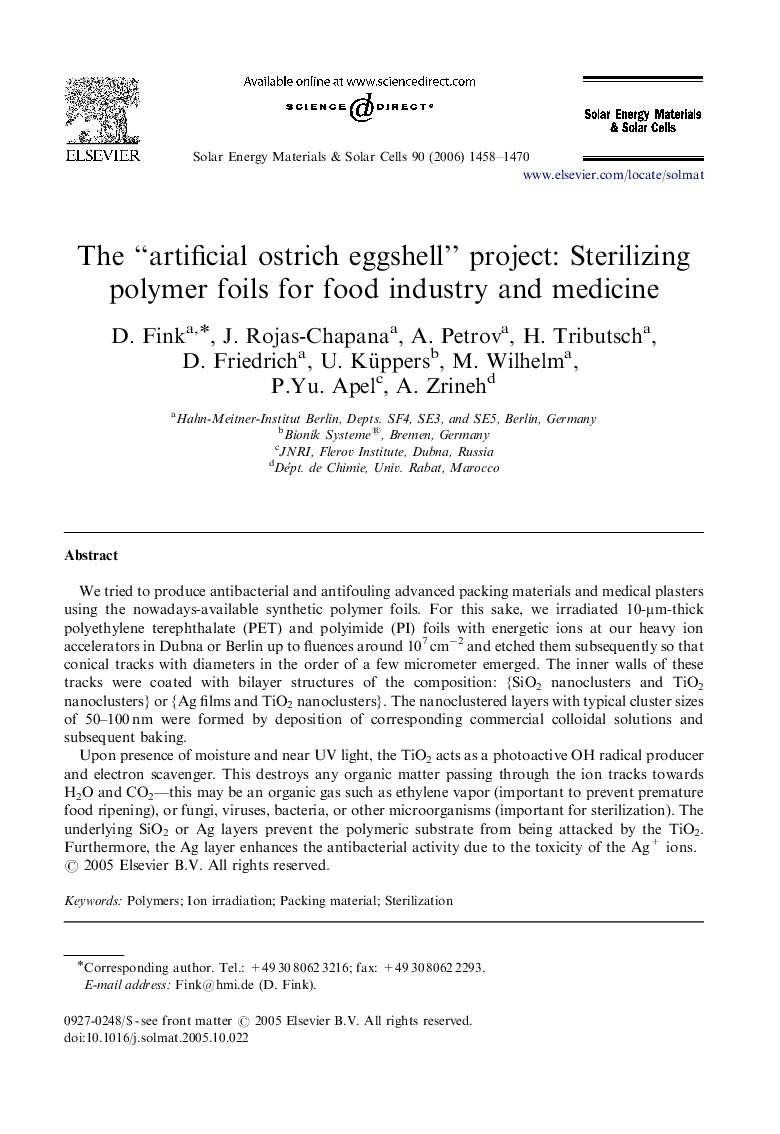| Article ID | Journal | Published Year | Pages | File Type |
|---|---|---|---|---|
| 81259 | Solar Energy Materials and Solar Cells | 2006 | 13 Pages |
We tried to produce antibacterial and antifouling advanced packing materials and medical plasters using the nowadays-available synthetic polymer foils. For this sake, we irradiated 10-μm-thick polyethylene terephthalate (PET) and polyimide (PI) foils with energetic ions at our heavy ion accelerators in Dubna or Berlin up to fluences around 107 cm−2 and etched them subsequently so that conical tracks with diameters in the order of a few micrometer emerged. The inner walls of these tracks were coated with bilayer structures of the composition: {SiO2 nanoclusters and TiO2 nanoclusters} or {Ag films and TiO2 nanoclusters}. The nanoclustered layers with typical cluster sizes of 50–100 nm were formed by deposition of corresponding commercial colloidal solutions and subsequent baking.Upon presence of moisture and near UV light, the TiO2 acts as a photoactive OH radical producer and electron scavenger. This destroys any organic matter passing through the ion tracks towards H2O and CO2—this may be an organic gas such as ethylene vapor (important to prevent premature food ripening), or fungi, viruses, bacteria, or other microorganisms (important for sterilization). The underlying SiO2 or Ag layers prevent the polymeric substrate from being attacked by the TiO2. Furthermore, the Ag layer enhances the antibacterial activity due to the toxicity of the Ag+ ions.
